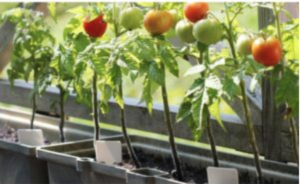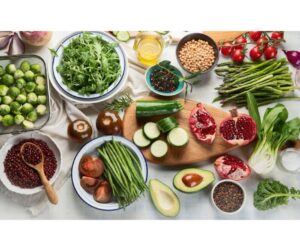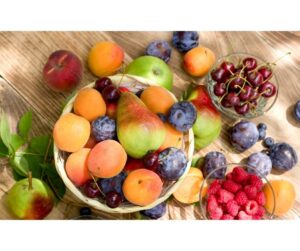Eating Seasonal: Is it worth it?
What does eating seasonally mean?
Eating seasonally involves consuming foods that are naturally ready to harvest at that time of the year. Different fruits and vegetables need different conditions for them to thrive and grow, for example, soil conditions, temperature, rain etc. We were previously able to eat seasonably before we were able to import foods from overseas, but nowadays we can import foods that are produced in another part of the world that has the best conditions for that item to thrive.
What are the benefits?
Environmental Benefits
Exporting goods from overseas can contribute to a larger carbon footprint as greenhouse gases can be produced at many different stages of the production process. For instance, importing bananas from Ecuador to the UK has an estimated carbon footprint of 1.28 tonnes of CO2 per 1 tonne of bananas. This is the equivalent of powering a car for over 3000 miles.

However, because in the UK we are not able to grow certain foods all year round, we would need to create alternative greenhouses to keep up with the consumer demand. For example, we can grow fresh tomatoes in the spring and summer, but during autumn and winter, we would need to use a greenhouse, which may also contribute to greenhouse gases.
Fundamentally, eating and growing foods from our local regions, without the help of additional lamps or greenhouses, has the lowest environmental impact, but this is not always possible and could cost more to the consumer.
Health benefits
Evidence shows us that nutrient levels in fruits and vegetables can vary depending on what season they were grown in, how ripe they are or the current climate. The highest nutrient levels are when they have just been picked. If food is picked, put into storage and then transported, then the nutrient levels can deplete.
What foods are in season throughout the months?
January:
- Brussels sprouts, carrots, cauliflower, kale, parsnips, savoy cabbage, swedes
February:
- Brussels sprouts, cauliflower, kale, leeks, parsnips, purple sprouting broccoli, savoy cabbage
March:
- Cauliflower, forced rhubarb, kale, leeks, purple sprouting broccoli, savoy cabbage
April:
- Asparagus, rhubarb, purple sprouting broccoli, spring cabbage, spring onions
May:
- Asparagus, lettuces, radish, rhubarb, spinach, spring cabbages, spring onion
June:
- Baby carrots, broad beans, chard, courgettes, currents, lettuce, parsley, radish, rocket, spinach, spring onions, strawberries
July:
- Beetroot, blueberries, cabbage, carrots, cherries, courgettes, cucumbers, currants, fennel, gooseberries, lettuce and salad leaves, new potatoes, peas, radish, raspberries, spinach, spring onions, shallots, tomatoes
August:
- Aubergines, beetroot, blackberries, broccoli, cabbage, cauliflower, carrots. Celery, chard, courgettes, cucumbers, fennel, lettuce and salad leaves, peas, petters and chillies, plums, potatoes, raspberries, runner beans, spring onions, sweetcorn, tomatoes
September:
- Apples, beetroot, blueberries, broccoli, cabbage, cauliflower, carrots, celery, chard, courgettes, cucumbers, fennel, figs, lettuce and salad leaves, pears, petters and chillies, plums, potatoes, runner beans, spinach, sweetcorn, shallots, onion and garlic, tomatoes
October:
- Apples, beetroot, broccoli, cabbage, cauliflower, carrots, celeriac, celery, chard, chillies, Jerusalem artichokes, kale, leeks, marrow, onions, pak choi, parsnips, pears, potatoes, rocket, spinach swede and turnip, winter squash and pumpkins
November:
- Apples, carrots, cabbages, cauliflower, kale, leeks, parsnips, pears, potatoes
December:
- Brussel sprouts, carrots, cauliflower, kale, leeks, potatoes, savoy cabbage
References:
Aires A, Fernandes C, Carvalho R, Bennett RN, Saavedra MJ and Rosa EA (2011) ‘Seasonal Effects on Bioactive Compounds and Antioxidant Capacity of Six Economically Important Brassica Vegetables’, Molecules, 16(8), pp. 6816-32.
National Trust (2022) Guide to Seasonal Food. Available at: https://www.nationaltrust.org.uk/discover/gardening-tips/guide-to-seasonal-food (Accessed on 29 December 2022).
Roibás L, Elbehri A and Hospido A (2016) ‘Carbon footprint along the Ecuadorian banana supply chain: Methodological improvements and calculation tool’, Journal of Cleaner Production, 20(112), pp. 2441-51. Stelmach-Mardas M, Kleiser C, Uzhova I, Panalvo JL, La Torre G, Palys W, Lojko D, Nimptsch K, Suwalska A, Linseisen J and Saulle R (2016) ‘Seasonality of Food Groups and Total Energy Intake: A Systematic Review and Meta-Analysis’, European Journal of Clinical Nutrition, 70(6), pp. 700-8.
Tiwari U and Cummins E (2013) ‘Factors influencing levels of phytochemicals in selected fruit and vegetables during pre-and post-harvest food processing operations’, Food Research International, 50(2), pp. 497-506.

